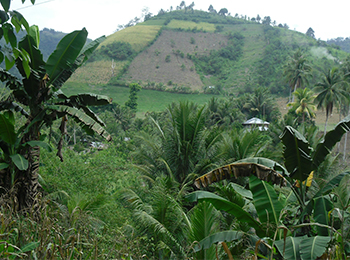About 1 result/s
-
Volume 5, Issue 2, September 2023
How can local governments build the resilience of disaster-affected households? This is an important concern since climate change is expected to worsen climate-related disasters especially among vulnerable sectors such as the urban poor in developing countries. For the Philippines, the most at-risk country in the World Risk Index 2022, it is important to address the vulnerability of the urban poor living in danger zones.
-
Volume 5, Issue 1, October 2022
There is a need to strengthen disaster preparedness and resilience at all levels of society in the
country. This study was conducted to assess, based on capitals, the level of disaster preparedness
of selected households, barangays, and municipalities in the Province of Laguna.

-
Volume 5, Issue 1, June 2022
With the increasing
incidence of extreme weather events, it is important to identify appropriate
strategies to enhance the adaptive capacity of households. In the Philippines
for example, climate-induced flooding is displacing many people. This is true
in the case of Pila, Laguna, Philippines, which is often flooded when there are
typhoons and monsoon events. Strong typhoons in the past caused houses near the
lake to be submerged in flood waters and forced households to evacuate. The
impact however on these households would vary depending on their adaptive
capacities. This study aims to assess the adaptive capacities of households in
lakeshore communities susceptible to flooding and identify strategies for
policy-makers.

-
Volume 4, Issue 1, April 2021
This study assessed the climate trends, changes, impacts, and adaptation strategies of farm households in five barangays in the Roxas mountain range, Koronadal City, South Cotabato by using household survey data from 265 respondents, and complimented with focus group discussions, and key informant interviews. The findings of the study revealed that climate changes are manifested by floods, landslides, and droughts as experienced by the local people which caused devastation and affected socioeconomic and environmental conditions of farming livelihood. Farmers used to have bountiful harvests, however, this situation recently changed due to the increasing climate-related risk events. The existing adaptation strategies are just stop-gap solutions that address the effects of climate change, but do not consider the root causes. To consider future changes in climate patterns, the socioeconomic and political structure and processes of the communities need to change by addressing multifaceted drivers of climate change hazards and their impacts. Some grassroot-level transformative adaptation strategies identified in the study consisted of socioeconomic facets, specifically, investment in children’s education, financial management, family planning, and development of alternative on-farm and nonfarm livelihood options. The environmental aspect, including the promotion of agroforestry system, water impoundment technologies, and advanced early warning system, were also considered.

-
Volume 4, Issue 1, January 2021
The Philippines is one of the countries
highly vulnerable to climate change, and this condition threatens further the meager
agricultural production in the country. However, while the Philippines has
established the institutional foundations linking climate change to agriculture,
through policies and legislation, advances in climate change adaptation have
been slow, especially at the local level. This paper demonstrated that this gap
in policy formulation and actual implementation stems from the lack of institutional
analysis in CCA efforts in the Philippines. The paper concludes that along with
the scientific and technological discussions, institutional conversations
should be among the initial vital steps in CCA planning, and policy and
decision-making. It further advocates that institutional analysis can be the
entry point for designing reforms toward effective CCA implementation.

-
Volume 2, Issue 2, July 2017
The livelihoods of Aytas of Floridablanca, Pampanga, Philippines are dependent on natural resources, which are prone to climate change impacts. To assess their adaptive capacity, this paper analyzed the different resources available in their community using the Sustainable Livelihoods Approach Framework.
-
Volume 1, Issue 1, January 2016
Climate-related hazards can lead to disasters in communities with lower socioeconomic conditions, inadequate access to basic social and infrastructure services, and poor institutions. The impacts of Typhoon Haiyan that struck the Philippines in 2013 not only highlighted the exposure of several cities but also indicated the underlying causes of their social vulnerability to climate-related hazards.
-
Volume 1, Issue 1, December 2015
The destruction left by Typhoon Haiyan in the Philippines highlighted not only the exposure of the country but also the underlying vulnerability of barangays (villages) to climate-related hazards. This study utilized Geographic Information System (GIS) to characterize social vulnerability to climate-related hazards of barangays of Tacloban City and Ormoc City using a modified social vulnerability index (SoVI).
-
Volume 1, Issue 1, December 2015
The destruction caused by Typhoon Haiyan in the coastal areas of central Philippines drew greater international attention to the vulnerability of coastal communities to extreme weather and climate events. Mangrove ecosystems enhance coastal resilience by acting as barriers against storms and its impacts.